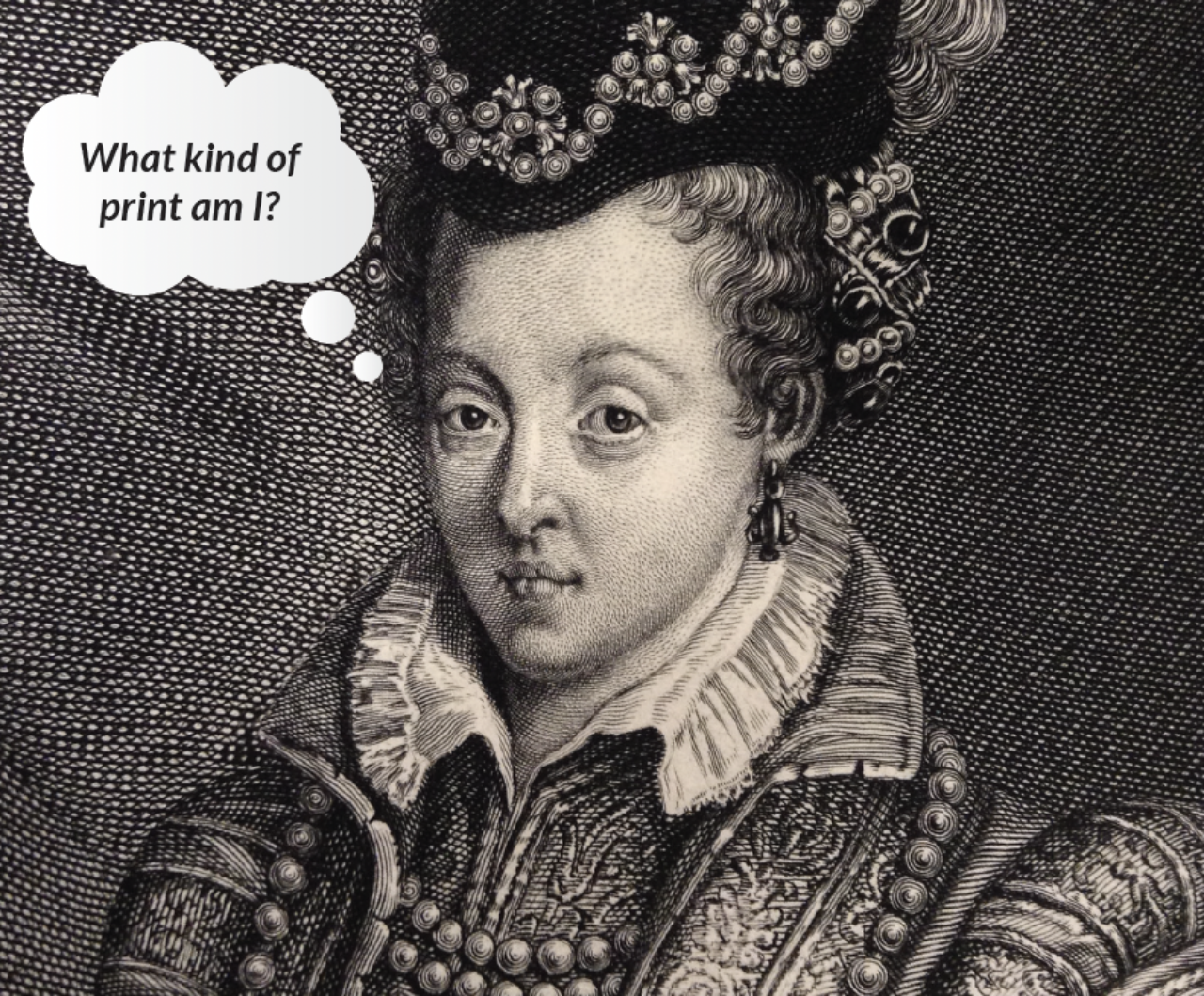Creating Access to the Wosk Print Collection
Posted on | Updated

What Kind of Print is That?
Improving Collections Access and Developing Material Literacy with the Wosk Print Collection
By Beth Howe
When ECU moved to the new campus in 2017, the Wosk Print Collection moved from a locked closet behind the Charles H. Scott Gallery to join the resources of the Archives and Artist Book Collection in the ECUAD Library.
As a print instructor, I jumped at the chance to get to know and use this collection of over 600 original prints in my teaching and research. As I got to know the prints, I could see that this was a very under-used teaching resource, and not just for printmaking courses. The collection includes works that relate to the histories of design and illustration, painting and drawing, sculpture, and photography as well as prints that speak to the social, economic, and cultural contexts of their place and time.
Even for those that know the collection exists, its lack of supporting resources makes it difficult to access, understand, and use. The Teaching Associate role gave me an opportunity to develop some tools and resources to aid in daylighting this collection for others.
This spring, MDES RA Giulia Borba and I
- inventoried the collection (discovering quite a few undigitized items)
- curated prints for the bi-weekly Artists Books & Archives Open Houses in the Library (have a look @daylight_in_the_vault)
- and created this tool to help visitors to the Wosk Collection figure out what they are looking at: What Kind of Print is That?
This tool encourages people to take an object-based discovery - or multi-sensorial observation - approach to learning with the collection. This educational method involves actively using authentic or replica material objects together with discovery learning processes so that learners find concepts through information obtained via hands-on observation – that is through touch, feel, and smell as well as sight.
In art school, students are very familiar with handling materials, but it is rare to be able to handle artworks made by others, especially historic works. Dr. Christina Hodges notes this is a major oversight in the development of a ‘material literacy’ and suggests that this literacy gives students ‘the ability to approach material culture as a generative source of meaning making’.
Dr Josef Wosk donated this collection to Emily Carr expressly to serve as a teaching collection. Next time you visit the Artist Book Collection, ask to see some prints as well.
Thank you to RA Giulia Borba, ECUAD library and library staff, and the supportive TLC!!
Coming up in 2024:
SSHRC Connection Grant - Collective Description of the Wosk Masterworks Print Collection: A Knowledge Exchange for Printmakers, Archivists and Librarians. Ana Diab, Beth Howe, and Kristy Waller will focus on questions of how libraries and archives with visual arts collections can navigate, activate, and ethically contextualise their existing holdings.